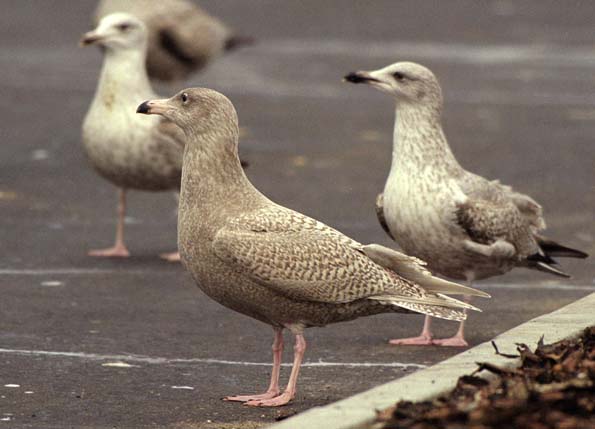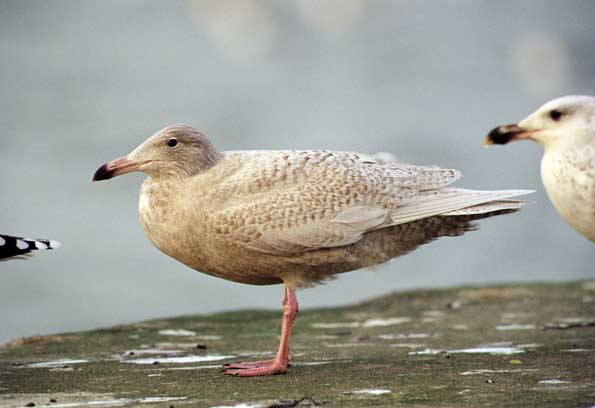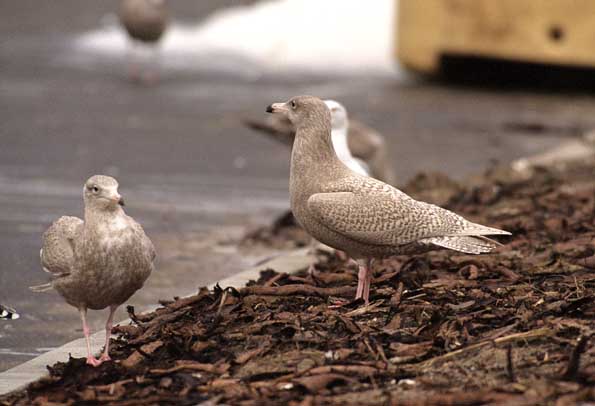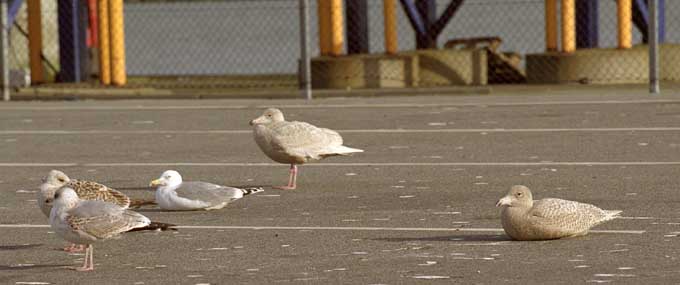
Larus hyperboreus
Glaucous Gull, Vittrut, Gråmåge
The Gull beyond the Northern wind

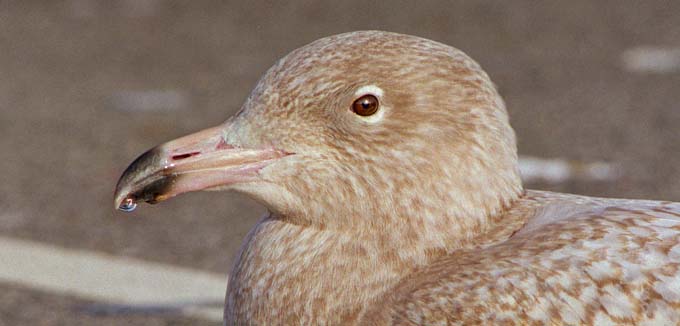
|
The
Glaucous Gulls of Hirtshals. Living on 57,3 degrees on the northern hemisphere has got its positive sides to it, one of which is, that you can meet with truly north Atlantic birds like the Glaucous Gull. But it also implies the negative aspect however, that light and lightning conditions during January and February, at least from a photographic point of view, are poor. I don't know how they do it. In the daytime, the sun is so low, that if you can't keep it directly behind you. its against you. And it sets early. That is if you've got a sun. If you havn't its easier. There's no light at all. Trouble is that these wonderful birds choose wintertime, usually January and February for their annual visits to Denmark preferably to this north western coast of peninsula Jutland. |
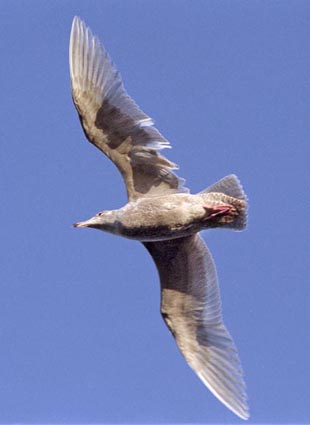 |
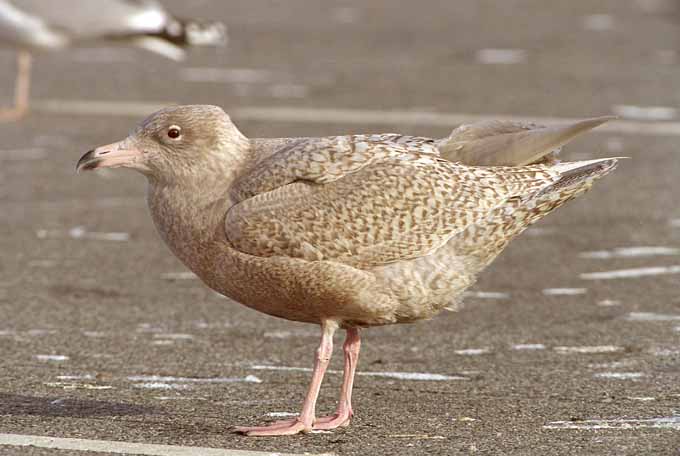
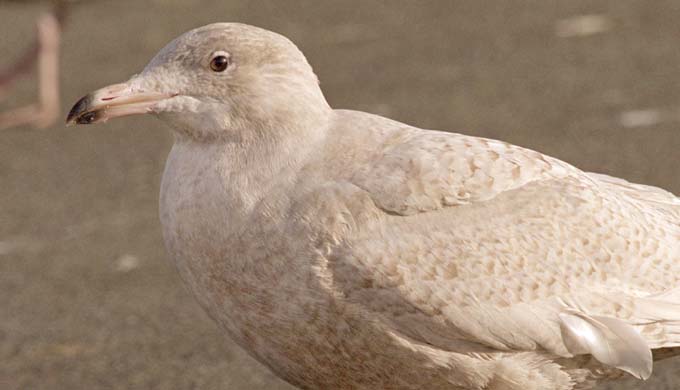
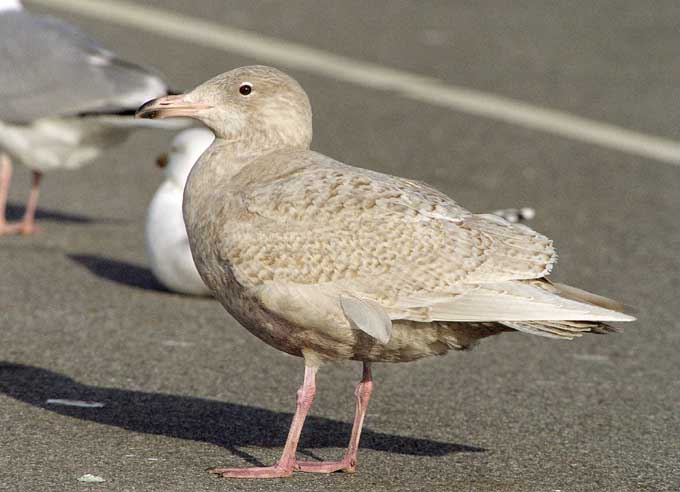
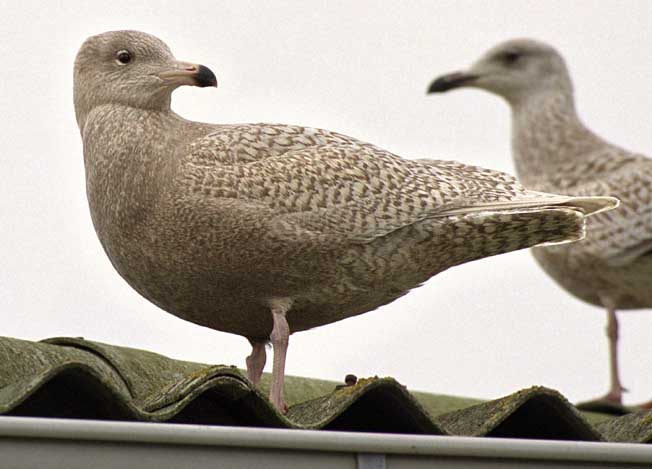
|
Five Larus hyperboreus.
The pictures on this page
are from the town of Hirtshals, a magnum fishing industrial centre with
its harbour facing the North Sea. |
winter along the
coasts of northern Europe, reaching first of all Ireland and Scotland in
variable, but usually smaller numbers. The Gull beyond the Northern wind. The scientific name for Glaucous Gull, Larus Hyperboreus, can be translated, into The Gull from beyond the Northern wind. "Larus" comes from the Greek "Laros" which was the name for a "ferocious sea bird". "A Gull" we presume. This is easy, and hyperboreus can be translated into "The very North", or even "beyond the northern wind" as hyper means, super or beyond and "boreas"again in the Greek Mythology, is the personified "Northern wind". |
